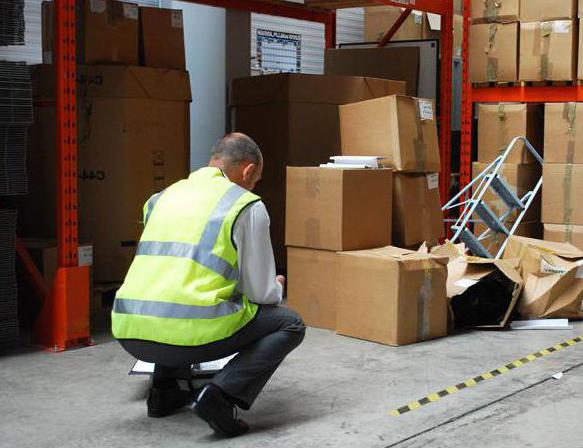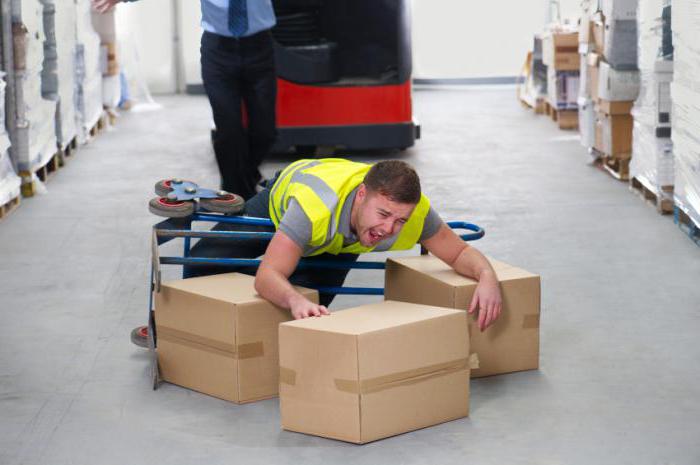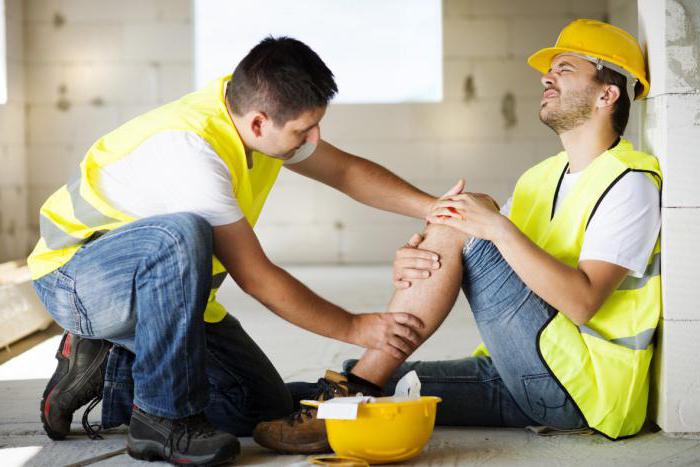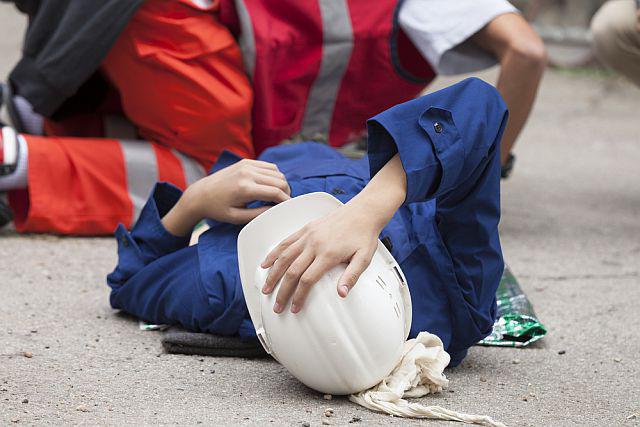Not every serious injury is accompanied by unbearable pain, just like not every slight injury is painless. The resulting bodily injuries are evaluated not by the degree of pain, but by the consequences and reaction of the body. That is why for a competent investigation is developed accident classification in production.
Terminology
In order to conduct an investigation in the proper manner, one should refer to the order of the Ministry of Health of the Russian Federation No. 160 of 2005. According to its provisions, absolutely all injuries, regardless of the cause of an accident at work, are classified into light and severe. And they are distinguished by the complexity of the damage, as well as by the duration of incapacity for work in time.
In most cases, forensic examination establishes that the injury is 100% severe if the victim has a development of its consequences, the appearance of chronic diseases against this background, permanent disability or death. Severe injuries have 3 degrees of severity.
Also in this order, the concept of “classification of industrial accidents” is clearly defined and a three-stage scheme is provided in which possible bodily injuries and their relationships with degrees of severity are indicated.
First severity
The first stage of the scheme is characterized by health damage that was initially accompanied by a patient with profuse blood loss, shock, problems with the functioning of the cardiovascular system, central nervous system, kidneys, liver, lungs. Even with the short-term existence of these health problems when injured, the latter will always be considered severe.
Second degree of severity
The second stage, unlike the first, may not appear immediately, but upon admission to the initial examination upon arrival at the healthcare organization (usually an emergency room or intensive care unit). Only a doctor can determine the presence of the following damage during a qualified examination using medical equipment.

The classification of industrial accidents provides for the classification of injury to the second degree of severity, if the following damage is revealed during the examination:
- penetrating wound of the skull;
- fractures of the bones of the face and skull;
- brain injuries;
- penetrating wounds in the pharynx, trachea, esophagus, thyroid gland;
- injury to the spinal column (dislocations and fractures of the vertebrae);
- wounding the chest with damage to the pleural cavity, heart muscles, or without them;
- penetrating wound of the abdomen with damage to the organs of the gastrointestinal tract, genitourinary system;
- rupture of organs;
- fractures of the pelvic bones, humerus, femur, tibia;
- open joint injuries;
- injuries of large blood vessels;
- burns of a thermal and chemical nature with a lesion area of more than 15% of the body, as well as burns to the face, respiratory tract, inguinal region;
- spontaneous abortion (miscarriage).
Third severity
The classification of industrial accidents distinguishes a separate group of the severity of injuries that cannot threaten the life of the victim, but are recognized as grave consequences:
- loss of vision (on one or both eyes);
- loss of ability to speak and hear;
- loss of an organ or termination of its functioning;
- mental disorders;
- disfigurement of the face.
Special cases
The Ministry of Health classifies some types of industrial accidents as serious, not because the injury is on one of the lists, but because it can aggravate the course of chronic diseases, and sometimes become a catalyst for irreversible processes leading to death.

One of such special cases was the trauma of Anna German, a Soviet singer. In 1967, she had a car accident, having received multiple bone fractures. For fifteen years, the singer took strong painkillers and struggled with thrombophlebitis and sarcoma - an oncological bone disease. All these fatal injuries appeared after the accident. A forensic examination has proven that pain, manifestations of new diseases and a complication of chronic ones are sure signs of a serious injury.

Often there are situations when the conclusion indicates that the injury is mild, but subsequent medical examinations and monitoring the condition of the victim require retraining it into a serious one. Here, the investigation is conducted directly by representatives of the Labor Inspectorate.
For example, a welder is injured during operation from an electric arc. After several days in the hospital, he feels improvement and informs the doctor about the restoration of disability. After some time, it turns out that upon receipt of an injury, the reproductive system of the welder has suffered so much that it will no longer function. Such an accident should be immediately transferred to the category of severe.

Sometimes minor injuries can lead to death, which warns Order of the Ministry of Health No. 160. In such cases, not only a general classification comes to the rescue. The investigation of industrial accidents in this situation is carried out jointly by the Labor Inspectorate and the Prosecutor's Office.
For example, a worker has a broken leg, a pre-treating doctor issues a certificate of mild injury. In the process of fracture, adipose tissue from the bone marrow enters the bloodstream, fat embolism develops. Death occurs within two days. It would seem a slight injury, but its consequences are fatal.
General classification of all NA
Before proceeding with the investigation, it is necessary to make sure that the injury is directly related to the production process, and when contacting a medical institution, the patient reported this, and the doctor put the code “04” on the sick leave - an injury at work.

All NS can be divided into industrial and domestic (those that do not fall under the definition of production).
Production NS
The Labor Code of the Russian Federation provides a classification of industrial accidents. So, these include injuries sustained by the employee during working hours on the territory of the employer or outside of her, in the performance of official duties, as well as when traveling to the place of work and from the place of work in official vehicles. Also included in this category are injuries sustained by an employee when performing overtime work during emergency response.
There is also a classification of the causes of industrial accidents. It is defined by the Order of Rostrud No. 21 of 2005:
- By source of injury: this includes 19 reasons, some of which relate to the employer, and the other to the employee. Each reason is assigned a unique code.
- According to the type of incident, all causes are divided into several groups and subgroups:
2.1. By transport (8 subgroups).
2.2. Fall from a height (4 subgroups).
2.3. Collapse (4 subgroups).
2.4. Injury by moving, rotating or scattering parts, elements, materials (5 subgroups).
2.5. Foreign bodies (3 subgroups).
2.6. Physical overload (3 subgroups).
2.7. Electric shock (1 subgroup).
2.8. Radiation (5 subgroups).
2.9. Extreme temperatures and natural factors (5 subgroups).
2.10. Fire and smoke (4 subgroups).
2.11. Harmful substances (2 subgroups).
2.12. Nervous overload.
2.13.Contact with dangerous animals and plants (3 subgroups).
2.14. Contact with water (2 subgroups).
2.15. Illegal actions of third parties.
2.16. Intentional self-harm.
2.17. Emergency (4 subgroups).
2.18. Other reasons.
Household NS
If the accident occurred with an employee outside the territory of the employer during off hours, on the territory of the employer, but not in the line of duty (for example, the turner is injured in the process of turning parts for personal use), if the employee was in a state of alcohol, drugs and other toxic intoxication, the injury is recognized as not related to production - household.
Thus, the official classification of industrial accidents allows us to determine not only the cause of the injury, but also its source.
